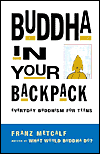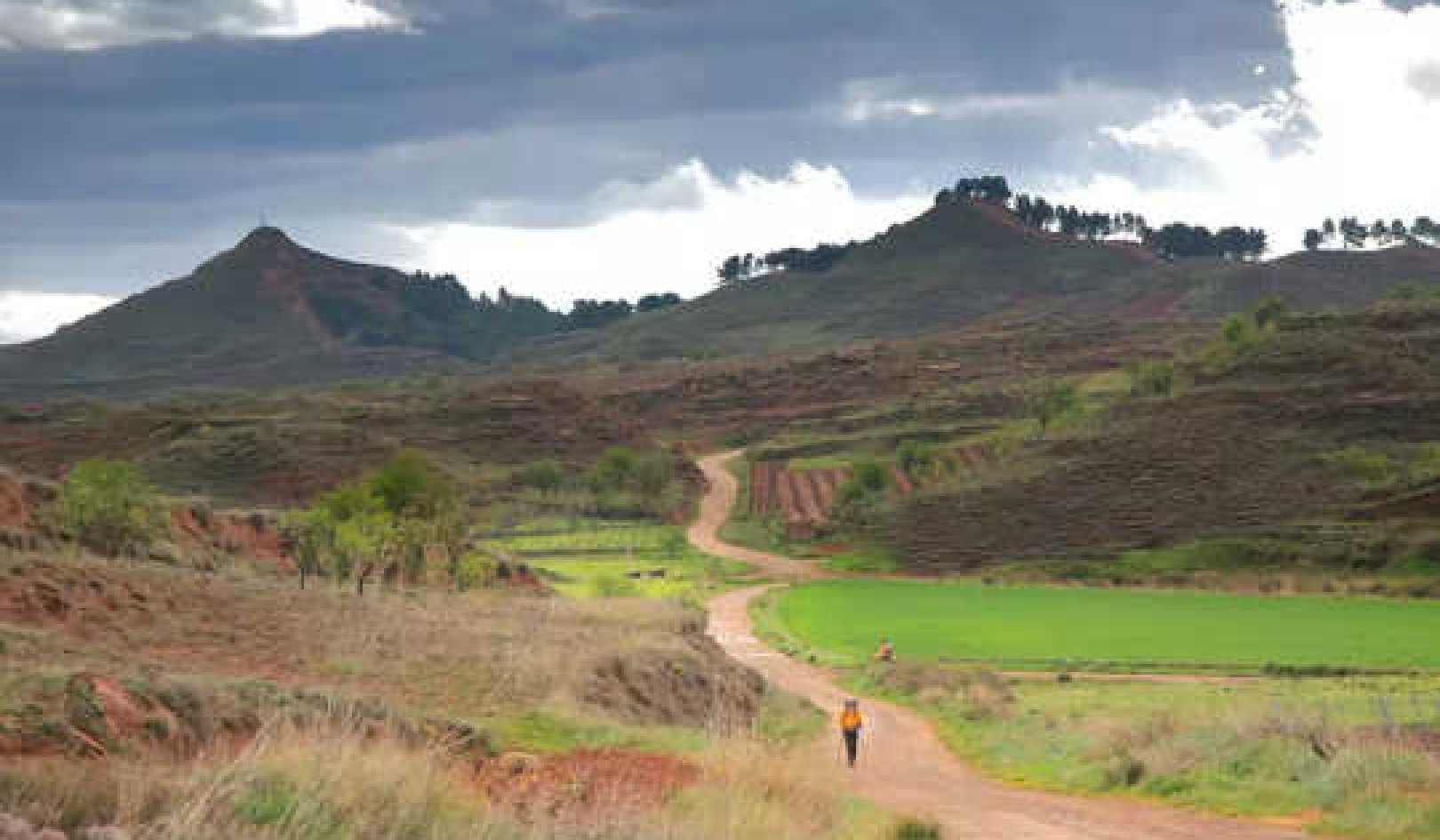
Image by Damián Fernando Tello Ceballos
Perhaps you envision meditation as something completely peaceful and still. Not always. Meditation is a tool for calming and concentrating the mind any time, any place. Sitting meditation comes first because it's easiest, but there are other kinds. One of the most important is walking. Now that you've tried sitting, try kinhin, a Zen form of walking meditation.
Sit down and begin meditation as you've learned to do. After five minutes or so, when you feel you are calm, slowly stand up. If your legs are asleep, uncross them and let them wake up first. Falling down is not usually a good form of meditation!
Once you're upright, place your hands close in front of your chest, with your left hand in a fist and your right hand resting on it, your right palm and fingers covering your left fingers and back of your hand. Let your elbows stick out naturally. Keeping your eyes half open or a bit more, begin to walk around the room — very, very slowly.
The Object Is Awareness
Be aware of the complexity of movement in simple walking. When the weight transfers from your trailing leg, the heel of your leading leg touches the ground, your weight comes down on this leg, the ball of your foot and toes lower, you press down on this leg and prepare to lift your trailing leg. Then you balance on the leading leg, bend the knee of your trailing leg, lift that heel, and swing it forward into the air. You're committed then; you're falling, and the ground is there to catch you every time. Each step is like this: trust and embrace, your balance, your foot, the ground, gravity, a dance.
Don't think about it, just experience it. You will find not thinking about it very difficult at first. You may take pride in your movement when it's smooth and graceful. If you're beaming with pride or thinking too much, remember that you're just walking — no reason to get puffed up. Relax your thoughts and let your mind calm down.
If you can manage this slow kinhin, try speeding it up, letting your arms relax and swing normally. Try doing kinhin outside. Eventually you'll be able to bring kinhin awareness into normal walking. It's the first step toward bringing meditation into your whole active life.
Fast Walking Meditation
In Japan kinhin is done really fast. It must feel good after a long session of sitting meditation. You're probably not doing whole days of meditation like Zen monks do, but you might want to try this during finals time or some other time you've been sitting too long and need action.
The meditation techniques we've talked about so far are usually done indoors. For fast walking meditation, it's best to have a large space to walk in. Unless you live in a big house, it will be easier to practice outside. The back yard is often good, since you won't run into anyone there, and no cars will run into you. Plan your route before you start the meditation. Walking around the perimeter of the yard is good. Try to stay on flat ground.
Sit in meditation for a few minutes until you can follow or count your breath without getting lost too often. Stand slowly. You can take the same posture as in kinhin, or you can let your arms hang normally at your sides. It is a bit harder to do with arms hanging because they'll begin to swing. Don't let it bother you, just let it happen naturally. Next, start walking. Keep your eyes half open so that you can see where you're going, but don't focus on any one thing. Don't risk tripping and falling over, just don't get hung up on what is in your field of vision.
Start slowly for a few breaths. Once you're moving and able to return your mind to breathing, you can pick up your speed to a normal-to-brisk pace. Remember, you are still meditating. You may be tempted to start thinking, to look around, even to stop at an interesting place such as the fridge or the basketball hoop. These are thoughts. Don't follow them. Let them fall away.
Return your mind to meditation. Tougher here, isn't it? You are expanding your meditation farther into your life. You can practice fast walking meditation anytime you walk.
Reprinted with permission of the publisher,
Ulysses Press. ©2003. www.ulyssespress.com
Article Source:
Buddha In Your Backpack: Everyday Buddhism for Teens
by Franz Metcalf.
 A guide for navigating the teen years, Buddha in Your Backpack is for young people who want to learn more about Buddhism or for those who simply want to understand what’s going on inside themselves and in the world around them.
A guide for navigating the teen years, Buddha in Your Backpack is for young people who want to learn more about Buddhism or for those who simply want to understand what’s going on inside themselves and in the world around them.
Click here for more info and/or to order this book. Also available as a Kindle edition.
About the Author
 Franz Metcalf did his Masters work at the Graduate Theological Union, and received his doctorate from the University of Chicago with a dissertation on the question, "Why Do Americans Practice Zen Buddhism?" He currently works with the Forge Institute for Spirituality and Social Change, co-chairs the steering committee of the Person, Culture, and Religion Group of the American Academy of Religion, and teaches college in Los Angeles. He has contributed reviews and chapters to various scholarly publications and is review editor of the Journal of Global Buddhism. He's the author of What Would Buddha Do? and co-author of What Would Buddha Do at Work? If you want to learn more about Franz (and other Buddhist things), visit his web site at: www.mind2mind.net
Franz Metcalf did his Masters work at the Graduate Theological Union, and received his doctorate from the University of Chicago with a dissertation on the question, "Why Do Americans Practice Zen Buddhism?" He currently works with the Forge Institute for Spirituality and Social Change, co-chairs the steering committee of the Person, Culture, and Religion Group of the American Academy of Religion, and teaches college in Los Angeles. He has contributed reviews and chapters to various scholarly publications and is review editor of the Journal of Global Buddhism. He's the author of What Would Buddha Do? and co-author of What Would Buddha Do at Work? If you want to learn more about Franz (and other Buddhist things), visit his web site at: www.mind2mind.net




























